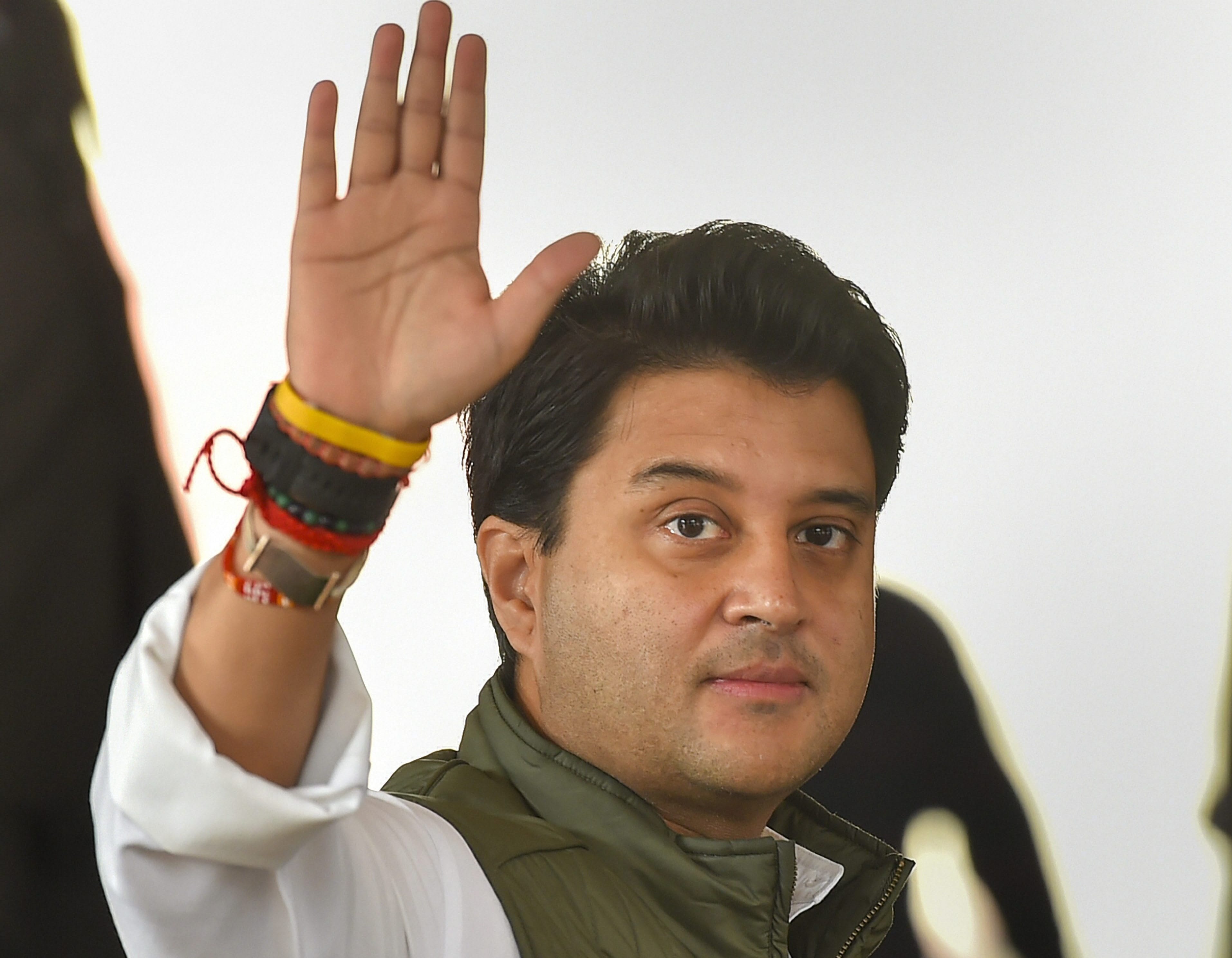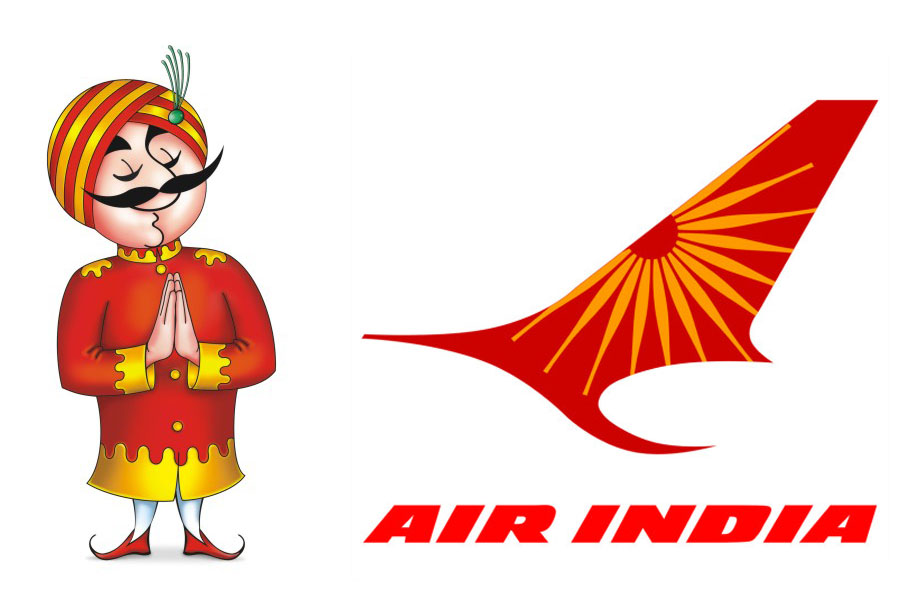
'Maharaj' now in-charge of Maharaja's turbulent flight

“The Maharaj will now oversee the sale of the Maharaja,” said a long-time political observer as news of Jyotiraditya Scindia being appointed the next Civil Aviation Minister flashed across television screens last night.
Scindia is often referred to as ‘Maharaj’ or ‘Shrimant’ due to his royal lineage. And as a Minister for Civil Aviation, he would now have to oversee the sale of Air India – also known as the ‘Maharaja’, after its potbellied mascot. State-owned Air India has been one of the toughest companies to disinvest, with the first such attempt in 2018 coming a cropper. In the second attempt too, there have been delays galore.
Now, it is widely believed that the Tatas are the top contenders for the airline, but the disinvestment process for Air India is neither expected to be smooth nor quick. A senior journalist tracking the Civil Aviation sector said that the change of guard in Rajiv Gandhi Bhawan, which houses the Ministry of Civil Aviation in New Delhi, may delay the completion of the sale of Air India further. And another source said that the financial situation of the airline has worsened due to the COVID-19 travel restrictions, making it tougher for any prospective bidder to show any enthusiasm in completing the acquisition.
Air India has more than ₹60,000 crore of debt on its books; many aircrafts are believed to be grounded due to the twin impact of COVID-19 and lack of a maintenance budget; the airline’s vendors are owed large amounts of money and its losses are mounting each month.
So is the Civil Aviation Ministry something Scindia may have wanted? An old friend of Scindia describes him as a suave politician who was probably keen to get a ‘high profile’ ministry like Civil Aviation. It is another matter that one of Scindia’s predecessors had tried hard to shake off the premium tag usually associated with this ministry, by speaking of hawai jahaj (aircraft) and the humble hawai chappal in the same breath. This predecessor had worked enthusiastically to expand the network of functional airports and facilitate more smaller towns and cities to come on to the domestic aviation map so that the business of flying could be deglamourized.
Also read: Air India sell-off: Viable reserve price holds the key to cut further losses
Of course, Jyotiraditya is not the first Scindia to helm this ministry – his father Madhavrao had also been a Civil Aviation Minister around three decades back. Madhavrao was part of the then Congress government led by Narasimha Rao while the son has chosen to align with the BJP after breaking away from the Grand Old Party. The father had a rough innings at the ministry, as pilots of the erstwhile Indian Airlines went on a prolonged strike and the situation got messy when air travel began to get seriously affected. Remember, at that time domestic skies were the exclusive monopoly of Indian Airlines. As Madhavrao, along with the airline’s Chairman and other top government officials, struggled to break the strike, one of the foreign aircraft the government had hired to break the strike crashed. Within hours of this crash, Madhavrao Scindia had resigned.
The scenario in which Jyotiraditya now finds himself as the Civil Aviation Minister may not be very similar, but it is sure to be equally challenging. The sector has been hit hard by COVID-19 travel restrictions, aviation turbine fuel prices are on fire, India’s busiest airports are staring at empty coffers and the walkover given earlier to the Adani group in airport privatisation continues to raise uncomfortable questions. All of this is in addition to the Air India puzzle, which is getting further tangled.

Since COVID-19 arrived on Indian shores, the government has capped the capacity each airline can deploy. It has also capped fares, setting upper and lower bands. Both these restrictions, along with a drastic decline in passengers, have wreaked havoc with the finances of all Indian airline industry. They were not in the pink of health even before the pandemic struck, but now there is widespread expectation of a consolidation in the market. Increasing airline turbine fuel (ATF) price accounts for at least 40-45 percent of airline costs, which is worsening the plight of Indian carriers. Global aviation consultancy CAPA has already estimated the loss per passenger for Indian airlines at ₹3500 ($47) in the current fiscal, more than four times the loss in 2019-20.
Also read: Adani won airport bids despite FinMin, Niti Aayog red flags: Report
As for airports, those which are operated under the Public Private Partnership model (the busiest in the country) are estimated to have posted a cash loss of nearly ₹10 crore every single day in 2020-21 as passenger traffic (domestic plus international) slipped by two-thirds. Operating income is estimated to have declined by 61 percent and margins have been squeezed by a fifth. Four private airports – Delhi, Mumbai, Bengaluru and Hyderabad – account for every second Indian passenger. Among private airports in the country, 9 in 10 passengers take a flight from one of these four airports.
Even privatisation of smaller airports is in the slow lane. The Adani group had bagged all six put up for privatisation last year, but has taken possession of only three, citing COVID-19 troubles. Another round of airports’ privatisation is on hold; even the ambitious regional connectivity scheme UDAN has been floundering as close to half the routes which were bagged under this scheme remain non-operational and smaller airlines which were to be the backbone of this scheme going bust.
Given all these challenges, will Jyotiraditya Scindia have a safe landing? This remains to be seen.

